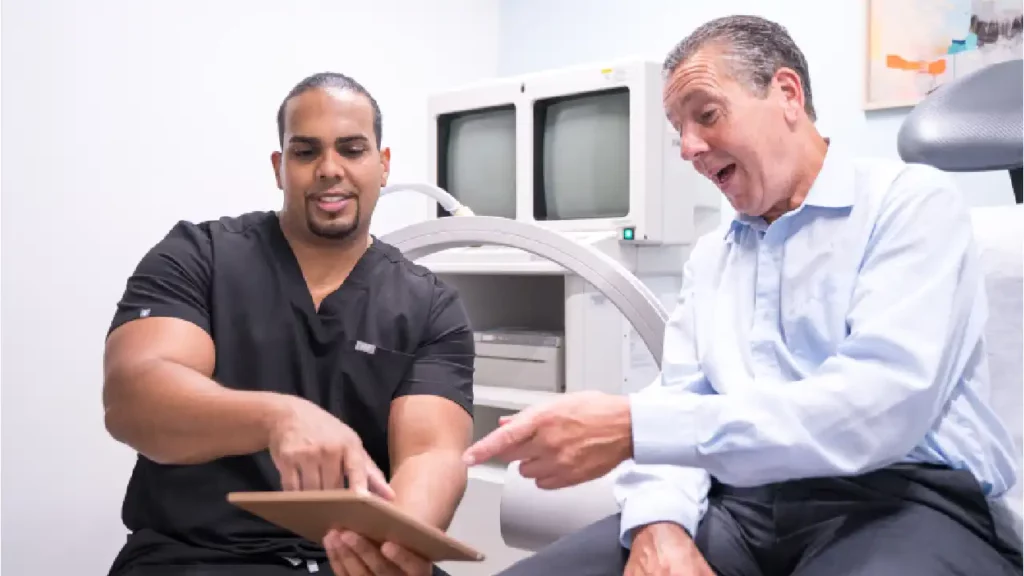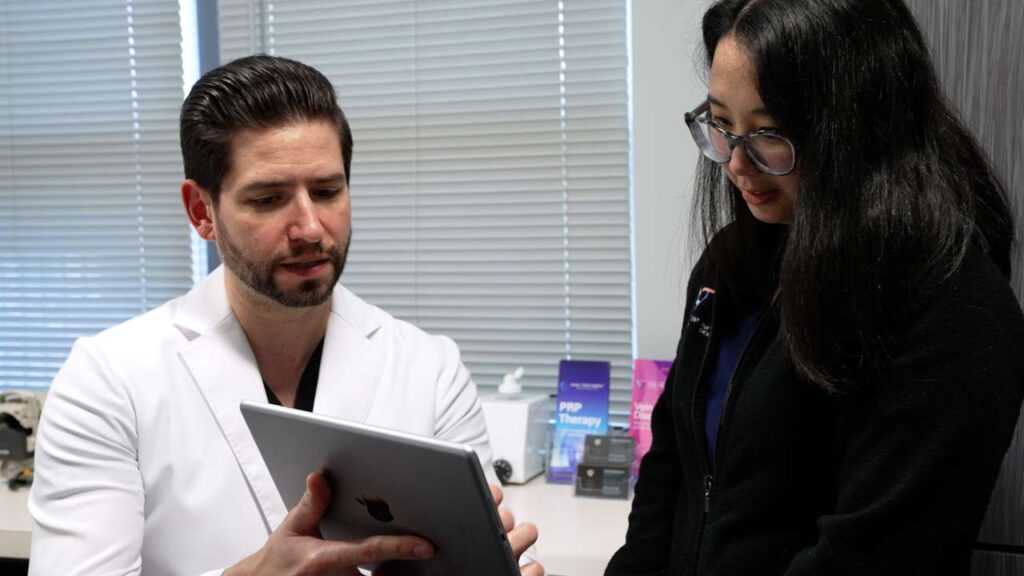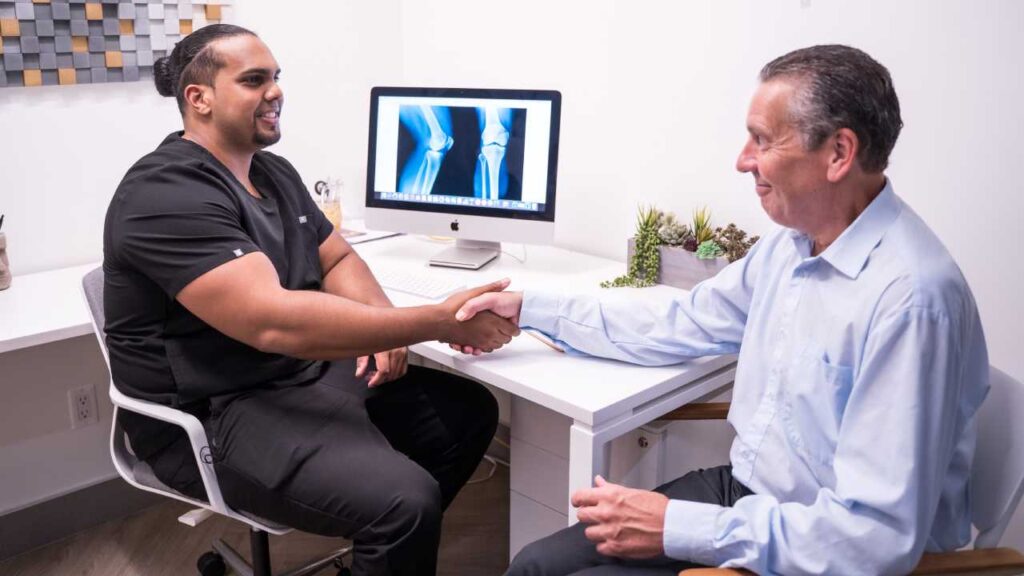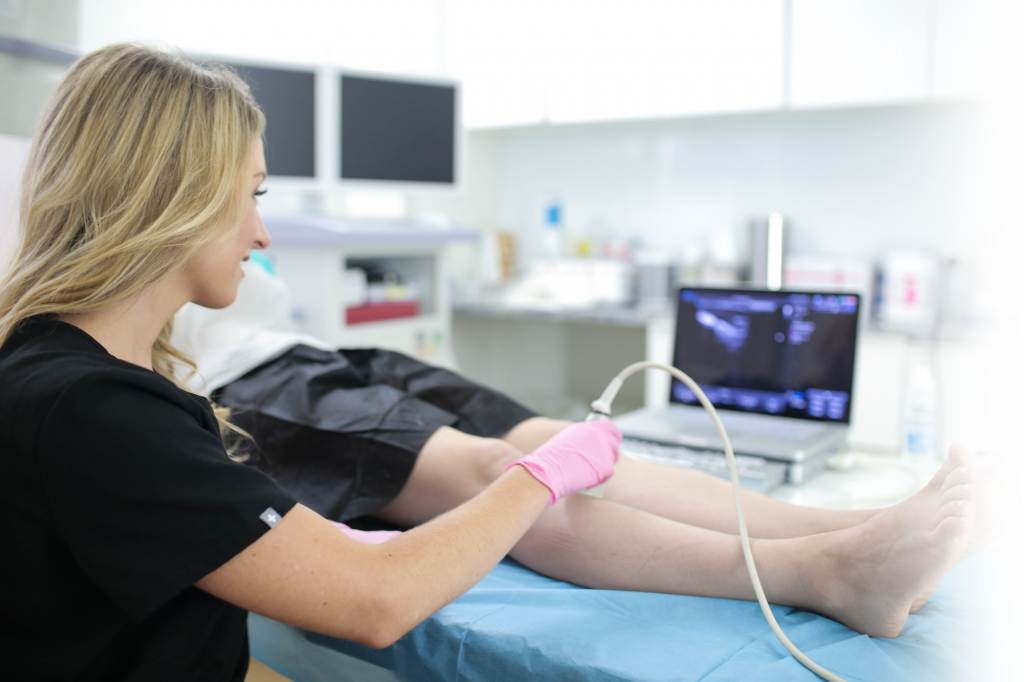Is Surgery Necessary for Varicose Veins or Spider Veins?
Are you tired of spider veins spreading across your legs? Are you wondering whether surgery is necessary to treat spider veins? Spider veins are a common frustration, but they’re easy to treat with the right vein doctor and don’t require surgery. Varicose veins rarely require surgery either. The best vein doctors use minimally invasive methods, like injectable medications and thermal energy, to treat spider veins.
Book an appointment with our Harvard-trained vein doctors to learn how to remove spider veins in 15-30 minutes! Our patients routinely treat their veins during their lunch break and go straight back to work. Read on to learn how we remove spider veins quickly and gently.
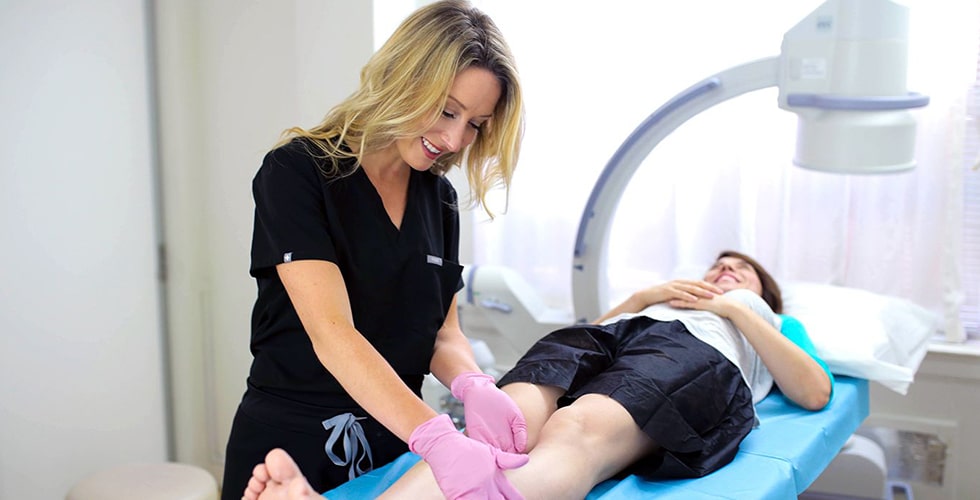
What Are Non-Surgical Options for Leg Vein Removal Near Me?
Spider veins can develop anywhere. But a common location for spider veins is the legs. That’s because leg veins must work against gravity to pump blood to the heart, so they’re prone to backward blood flow. Blood flows in reverse if a valve fails to close tightly enough to prevent venous reflux. The result is excess pressure in the vein that forces new offshoots called spider veins.
If you have spider veins in your legs, a vein doctor should identify the cause before treatment. If there is valve failure in a deeper vein, they’ll need to treat that along with the spider vein. Otherwise, you might develop more spider veins and varicose veins. Some patients can reduce spider veins symptoms, like cramping and swelling, if they wear compression stockings and don’t sit or stand for long periods of time. But these tactics won’t eliminate spider veins, and they require long-term adherence. The best ways to perform leg vein removal are the following options.
- Sclerotherapy
- Radiofrequency Ablation
- Endovenous Laser Ablation
- Vein Adhesives
- Mechanochemical Ablation
- Surface Lasers
What Is the Sclerotherapy Meaning, and Is It Right for Me?
You may have heard certain spider or varicose vein treatment names before, but what do they mean? One of the most common procedures is sclerotherapy, meaning an injection of a sclerosant into the vein. Sclerosing solutions irritate the vein walls, creating scar tissue that seals the vein shut. This is an outpatient procedure, and patients remain awake while it’s performed.
Since it requires no general or local anesthesia, sclerotherapy is a safe and effective way to remove spider veins and small varicose veins for most patients. Your vein doctor will look at your venous pathways and medical history to determine whether sclerotherapy is right for you. If not, they’ll recommend one of the alternatives listed above.
Spider or Varicose Veins vs Stretch Marks: Same Treatment?
Another common treatment for spider veins is laser treatment. These are not the same lasers that are used for stretch marks. Stretch mark laser treatments heat the skin to induce the production of collagen. Spider vein laser treatments heat either the vein walls or the blood in the vein depending on the treatment you have.
There are two primary categories for vein lasers: lasers that are applied at the skin’s surface and lasers that are applied to vein walls. The latter is an endovenous procedure, meaning the vein doctor inserts a hollow needle into the vein and heats the vein walls directly. Surface laser treatments send thermal energy through the skin to heat the blood in the vein.
Surface lasers are used for facial spider veins and certain small leg veins, but they can’t treat most varicose veins or deep veins, since the amount of heat required would damage the skin. Endovenous lasers are better for many leg veins. The purpose of laser treatments is to close a vein. Surface lasers do it by causing blood to coagulate and scar the vein shut. Endovenous lasers do it by heating the vein walls directly until the vein closes.
What Are Collapsed Vein Treatment Options for Dead Veins?
You might have heard the phrases “collapsed vein treatment” or “dead veins” and wondered what they mean. Veins can collapse on their own, or they can be collapsed intentionally. When doctors remove spider veins, they collapse them intentionally, so they’re removed from sight. With the vein doctor’s guidance, blood flows away from the treated vein and into veins that can pump it back to the heart. The collapsed vein is then harmlessly reabsorbed by surrounding tissue.
While this might sound unsettling, it’s safe and painless. The adult body contains roughly 60,000 miles of blood vessels, so it can do without a defective vein, particularly when the vein doctor reroutes your circulation. A spider vein is not technically a “dead vein,” but it’s a dead-end vein. Blood that flows into a spider vein is no longer headed toward the heart. Spider veins extend out from an overburdened vein, and they are useless to the circulatory process.
How Much Is Spider Vein Removal in New Jersey?
The price of spider vein removal is largely determined by insurance. To acquire maximum coverage, it’s essential to choose a board certified vein doctor. A vein doctor can produce images that identify broken valves, venous insufficiency, and blood clots. This step is often required to get full coverage. Our patients routinely have no out-of-pocket expenses for their spider vein removal. We’ll guarantee your coverage before the appointment.
Cosmetic and dermatological centers only conduct surface treatments, so their procedures are often considered elective by insurance. These specialists lack the ultrasound tools to prove your issue is more than skin deep. In addition, some cosmetic vein centers are out of network. For affordable vein treatment, always choose a qualified vein doctor.
How Much Is a Varicose Vein Treatment in NJ?
While some spider veins are caused by sun damage or skin injury, varicose veins in the legs typically stem from venous insufficiency. So, it’s just as important to see a verified vein doctor to receive affordable varicose vein treatment. Most cosmetic vein centers are not equipped to treat varicose veins because they can be larger or deeper than spider veins.
How Do I Determine What Doctor to See for Vein Problems?
If you’re wondering what doctor to see for vein issues, choose one that specializes in veins. Don’t assume a vein center is staffed by vein doctors. A surprising number of them aren’t. Look for a doctor with board certification in phlebology, vein medicine, or vascular surgery. If you choose a vascular surgeon, make sure they’re also trained in minimally invasive techniques. Surgery is required for certain blood vessels like carotid arteries, and veins with a higher risk for blood clots. But most vein issues are better suited to non-surgical modalities.
How Do I Choose What Doctor to See for Veins in New Jersey?
If you want to know how to remove spider veins gently and quickly, it starts with choosing a minimally invasive vein specialist. These doctors can go more than skin deep. But they also avoid surgery whenever possible. The best approach for most leg veins is a minimally invasive technique that treats the vein walls directly without extracting the vein. The top vein doctors in New Jersey are Dr. Todd Kobrinski, Dr. Andrew Cortes, and Dr. Mitchell Karmel.
Where Is the Best Leg and Vein Clinic Near Me in NJ?
The best leg and vein center near you has five locations. Visit our award-winning doctors in Paramus, Woodbridge, Scotch Plains, Woodland Park, or Clifton for cutting-edge vein care. We offer the latest spider and varicose vein treatment methods that prevent surgery and downtime. We remove spider veins in under 30 minutes, so you can resume your usual routine!
